When you buy a new car, what are the things you consider before making the purchase? Price? Mileage? Size? How about safety rating? Do you even think about how safe a car is? But more than that, do we even know what makes a car safe?
What Makes A Car Safe?
 Accidents happen at the worst moments. There’s no way to predict when it can happen. Because of this, the only thing you can do is to ensure that your car is the safest place you can be during the accident.
Accidents happen at the worst moments. There’s no way to predict when it can happen. Because of this, the only thing you can do is to ensure that your car is the safest place you can be during the accident.
However, not all cars are created equal. Some are safer than others. If you are shopping for a brand new or used car, it’s best to know the safety rating of a car and the safety features it has before making a decision. More than the price or mileage, you must be sure that your car can protect you on the road.
But before we go and talk about safety features, let’s try to understand what safety ratings are and how they work.
Safety ratings are given by the National Highway Traffic Safety Administration to cars depending on how safe they are. Cars are given 1 to 5 stars with 5 as the safest and 1 as the lowest possible safety standard. You can check the safety ratings of cars online or on the stickers that come are found on the windows.
Inside the NHTSA, they check for a number of things in order to give the safety rating of a car. Perhaps the most popular check they do is called a crash test. This is when they subject the car to various crashes (front, rear, and side) to check for crashworthiness.The test aims to find out whether the car can lessen the damage to its passengers in the event of an accident.
Car Safety Features You Should Look Out For
Aside from the safety rating provided by the NHTSA, you should also look out for safety features that can make a specific car safer than the others. We’ve listed down some of the safety features you might want to look out for if you are in the market for a new car.
 Airbags – Airbags work perfectly with seat belts in ensuring passenger safety. While the seat belt keeps you from being thrown away from your seat, the airbag cushions the probable impact you might have with the steering wheel or dashboard. While others claim that seat belts are unnecessary when you have airbags, this is false and a very dangerous way of looking at car safety.
Airbags – Airbags work perfectly with seat belts in ensuring passenger safety. While the seat belt keeps you from being thrown away from your seat, the airbag cushions the probable impact you might have with the steering wheel or dashboard. While others claim that seat belts are unnecessary when you have airbags, this is false and a very dangerous way of looking at car safety.
Anti-lock Braking System – ABS is a mechanism that prevents the car’s wheels from locking due to emergency braking. This allows the driver to have better control of the car even when they hit the brakes. This helps in collision avoidance and gives the driver enough control to maneuver. However, the ABS is not all-powerful as you may still lose control of your car if you are going to fast or are doing extreme maneuvers. Some cars that come with ABS also have brake assist. Brake assist senses the “urgency” of your brake and adjusts the power as needed. The system detects the speed and force at which the driver steps on the brake pedal and assesses it. On normal conditions, brake assist allows the driver to reach the threshold to activate ABS more quickly.
Electronic Stability Control – Often named differently depending on the manufacturer, ESC is a system that assists the driver in keeping the car under control during extreme maneuvers. ESC can sense when a driver is oversteering (causing the car to spin) and applies the brake to one wheel in order to cancel the spin. ESC is designed to minimize accidents where cars veer off the road. One thing worth noting is that ESC can easily be overcome by extreme speed.
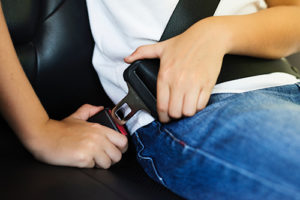 Seat belts – No car on the road should be without a seatbelt. However, a seatbelt should be more than just a thing that keeps you on your seat. It should be comfortable enough to be used during daily drives, strong enough to keep you from flying out of the windshield or hitting the steering wheel in an accident, and designed to limit damage to your shoulders and chest upon impact. Look for a car with safer seat belt designs.
Seat belts – No car on the road should be without a seatbelt. However, a seatbelt should be more than just a thing that keeps you on your seat. It should be comfortable enough to be used during daily drives, strong enough to keep you from flying out of the windshield or hitting the steering wheel in an accident, and designed to limit damage to your shoulders and chest upon impact. Look for a car with safer seat belt designs.
Safety should be the number 1 priority when buying cars. After all, accidents can happen at any time so you should be sure that your car can handle the job when the time arises. T3 Atlanta can help you out in picking the right car for your need based on the safety ratings and features. We can help you create a checklist to find out if a specific car is safe enough for you and your family. Contact us today!
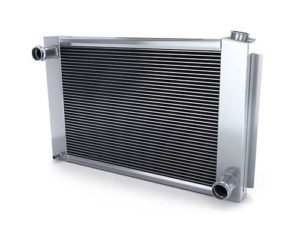 When you have been using your car for some time, the engine heats up. In order to ensure that the engine does not overheat, water or coolant is circulated to take the heat from the engine into your radiator. Inside the radiator, heat is dumped to the outside air as the coolant cools down and makes another trip to the engine. This is how the engine cools itself off.
When you have been using your car for some time, the engine heats up. In order to ensure that the engine does not overheat, water or coolant is circulated to take the heat from the engine into your radiator. Inside the radiator, heat is dumped to the outside air as the coolant cools down and makes another trip to the engine. This is how the engine cools itself off.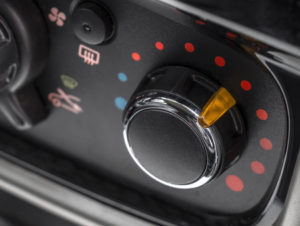
 Turn off the A/C – Your A/C eats up a lot of fuel so you might want to step back from using them unnecessarily. Try driving with the windows down especially when the air is fresh.
Turn off the A/C – Your A/C eats up a lot of fuel so you might want to step back from using them unnecessarily. Try driving with the windows down especially when the air is fresh.


 So you already know where you plan to go and you have all the information you need, but that’s not enough for you to get on the road. You still need a couple of things to make the road trip a success.
So you already know where you plan to go and you have all the information you need, but that’s not enough for you to get on the road. You still need a couple of things to make the road trip a success. Depending on where you plan to go on your fall road trip, the weather can get a bit crazy. You might be enjoying a sunny afternoon drive but it can get a bit wet and cold after an hour. Make sure you bring clothes that can protect you in case it gets too cold or too hot.
Depending on where you plan to go on your fall road trip, the weather can get a bit crazy. You might be enjoying a sunny afternoon drive but it can get a bit wet and cold after an hour. Make sure you bring clothes that can protect you in case it gets too cold or too hot.
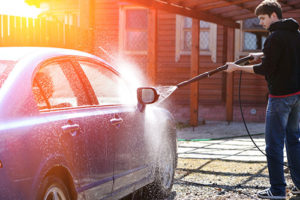 When you got your first car, your mom/dad/uncle/aunt probably told you to always clean your car mostly because they think it shows what kind of person you are. But aside from the aesthetic and social reasons, you have to realize that a clean car is a healthy car.
When you got your first car, your mom/dad/uncle/aunt probably told you to always clean your car mostly because they think it shows what kind of person you are. But aside from the aesthetic and social reasons, you have to realize that a clean car is a healthy car. The idea is to wash your car regularly. However, regular differs from person to person. We often recommend washing your car at least every two weeks. This is recommended for people who don’t use their cars often and are living in areas with little to no hazards to the car (salt from the ocean for example).
The idea is to wash your car regularly. However, regular differs from person to person. We often recommend washing your car at least every two weeks. This is recommended for people who don’t use their cars often and are living in areas with little to no hazards to the car (salt from the ocean for example). If you are not a big fan of washing your car frequently, having your car waxed can extend the time between washes. With a wax coating, your car will look shiny and new. A wax coating also protects the paint and prevent unwanted etching. A waxed up car is also easier to clean up as you can just easily wipe away dirt, grime, or sap.
If you are not a big fan of washing your car frequently, having your car waxed can extend the time between washes. With a wax coating, your car will look shiny and new. A wax coating also protects the paint and prevent unwanted etching. A waxed up car is also easier to clean up as you can just easily wipe away dirt, grime, or sap. We always tell our clients that the suspension system in your car works similarly to the joints and to a certain extent your bones. It’s what keeps you upright and helps cushion your every step. Have you ever seen somebody with joint problems? It’s just like in cars. If your suspension has problems it becomes harder to move properly.
We always tell our clients that the suspension system in your car works similarly to the joints and to a certain extent your bones. It’s what keeps you upright and helps cushion your every step. Have you ever seen somebody with joint problems? It’s just like in cars. If your suspension has problems it becomes harder to move properly.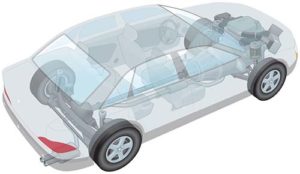 3. A Rough Drive
3. A Rough Drive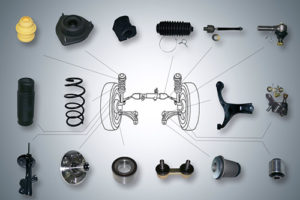 7. Difficulty in Steering
7. Difficulty in Steering Music is a must-have on any road trip. Instead of packing a binder of CD’s, download Spotify. This app offers millions of songs and podcasts to keep you and your road trip companions entertained whether your trip is three-hundred or three-thousand miles long.
Music is a must-have on any road trip. Instead of packing a binder of CD’s, download Spotify. This app offers millions of songs and podcasts to keep you and your road trip companions entertained whether your trip is three-hundred or three-thousand miles long. Are you a spontaneous traveler? The REI Co-Op National Parks Guide might be your new best friend. This free app contains maps and sightseeing information about many of the country’s National Parks with new park information updated regularly.
Are you a spontaneous traveler? The REI Co-Op National Parks Guide might be your new best friend. This free app contains maps and sightseeing information about many of the country’s National Parks with new park information updated regularly. Audubon’s Bird Guide app is the perfect, palm-sized field guide for anyone who wants to try bird watching on their next road trip. The app makes it easy to explore what kind of birds are nearby so that you know what to look out for.
Audubon’s Bird Guide app is the perfect, palm-sized field guide for anyone who wants to try bird watching on their next road trip. The app makes it easy to explore what kind of birds are nearby so that you know what to look out for. TripIt is the ideal travel companion for hardcore planners. This app creates an all-in-one itinerary for you to make your trip as smooth as possible. All you need to do is forward your travel information – that includes hotels, travel, and even restaurants – to their dedicated submission line, and TripIt does the rest.
TripIt is the ideal travel companion for hardcore planners. This app creates an all-in-one itinerary for you to make your trip as smooth as possible. All you need to do is forward your travel information – that includes hotels, travel, and even restaurants – to their dedicated submission line, and TripIt does the rest. Unless you own an electric car, GasBuddy is a road trip essential. With this app, all you need to do is enter in your location and it does the rest, finding the closest gas stations to where you are as well as prices. That way, you don’t have to be uncertain about where the next gas station is or be surprised by prices.
Unless you own an electric car, GasBuddy is a road trip essential. With this app, all you need to do is enter in your location and it does the rest, finding the closest gas stations to where you are as well as prices. That way, you don’t have to be uncertain about where the next gas station is or be surprised by prices.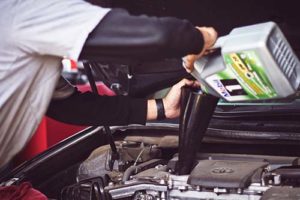 Whether or not you adhere to the advice of changing your oil every 3,000 miles, keeping up with how much you drive and how often you change your oil can prolong the life of your engine. Fresh oil lubricates the engine’s interior parts and keeps them from seizing up or wearing excessively against each other. Older oil isn’t as effective at providing a cushion between metal parts, leading to premature wear and tear that leads to expensive repair bills.
Whether or not you adhere to the advice of changing your oil every 3,000 miles, keeping up with how much you drive and how often you change your oil can prolong the life of your engine. Fresh oil lubricates the engine’s interior parts and keeps them from seizing up or wearing excessively against each other. Older oil isn’t as effective at providing a cushion between metal parts, leading to premature wear and tear that leads to expensive repair bills.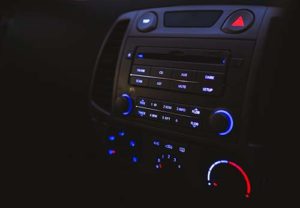 In Atlanta’s heat, you’ve no doubt made good use of your vehicle’s air conditioning system all summer. It may seem like the warm weather will continue for months to come, but the cold is approaching quickly. Test your car’s heater before the thermostat dips so that you don’t have to drive to work or school in the cold.
In Atlanta’s heat, you’ve no doubt made good use of your vehicle’s air conditioning system all summer. It may seem like the warm weather will continue for months to come, but the cold is approaching quickly. Test your car’s heater before the thermostat dips so that you don’t have to drive to work or school in the cold.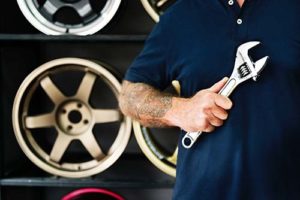 Your tires are easy to forget about, but the truth is that they undergo a remarkable amount of wear and tear even on a short grocery trip run. Having an adequate amount of tread will keep you on the road in wet and slick conditions, helping ensure that you and the drivers around you get where you’re going safely. Similarly, although Atlanta doesn’t typically get snowy weather, we do tend to get ice during the winter. Having tires with enough tread will help you keep traction during these wintry conditions.
Your tires are easy to forget about, but the truth is that they undergo a remarkable amount of wear and tear even on a short grocery trip run. Having an adequate amount of tread will keep you on the road in wet and slick conditions, helping ensure that you and the drivers around you get where you’re going safely. Similarly, although Atlanta doesn’t typically get snowy weather, we do tend to get ice during the winter. Having tires with enough tread will help you keep traction during these wintry conditions.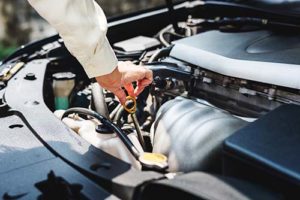 Ideally, you should check your transmission fluid, power steering fluid, brake fluid, and all other essential fluids at the start of the fall. If you don’t have the capabilities to do so, don’t fret. Call T3 Atlanta and we’ll take care of this quick check for you.
Ideally, you should check your transmission fluid, power steering fluid, brake fluid, and all other essential fluids at the start of the fall. If you don’t have the capabilities to do so, don’t fret. Call T3 Atlanta and we’ll take care of this quick check for you. Located in Northern Georgia, the Chattahoochee-Oconee National Forest is a must-see destination for sightseers, bird watchers, hikers, and fall foliage photographers alike.
Located in Northern Georgia, the Chattahoochee-Oconee National Forest is a must-see destination for sightseers, bird watchers, hikers, and fall foliage photographers alike.
 No fall foliage list is complete without mentioning the Blue Ridge Parkway. This scenic road starts in the Great Smoky Mountains National Park in North Carolina and winds 469 miles all the way to the Shenandoah National Park in Virginia.
No fall foliage list is complete without mentioning the Blue Ridge Parkway. This scenic road starts in the Great Smoky Mountains National Park in North Carolina and winds 469 miles all the way to the Shenandoah National Park in Virginia. Is the shop clean and tidy, or is it messy and disorganized?
Is the shop clean and tidy, or is it messy and disorganized? What certifications/training do your mechanics have? (And, is their training up-to-date?)
What certifications/training do your mechanics have? (And, is their training up-to-date?)








